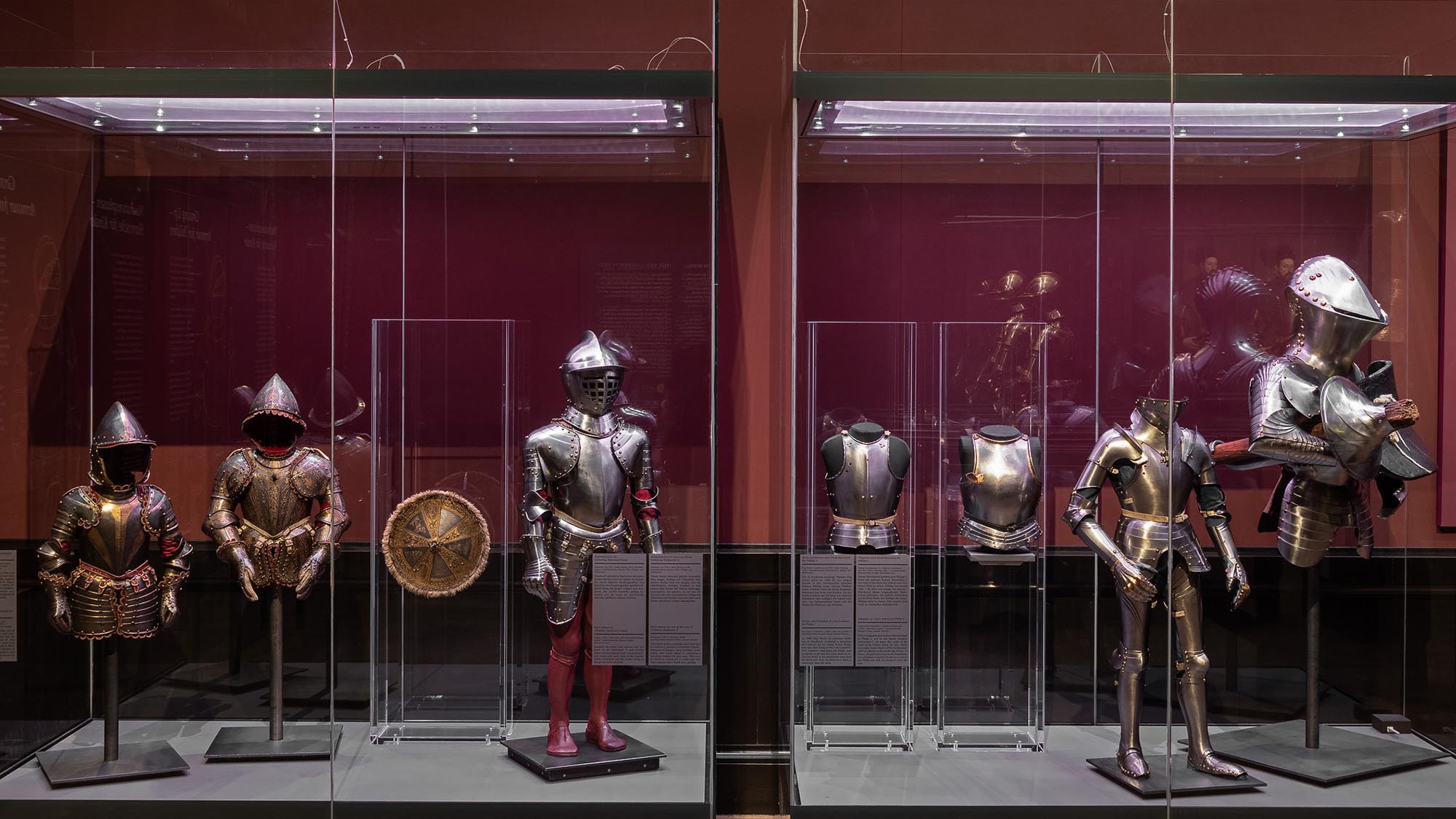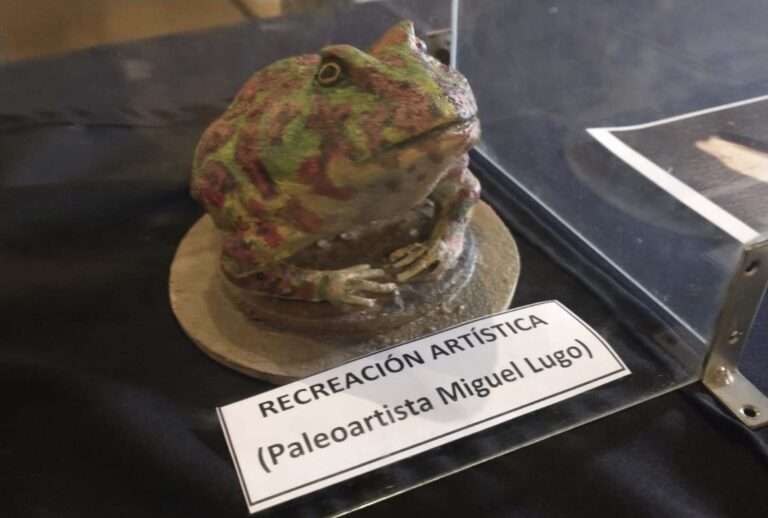Armoured knights used bizarre upturned codpieces to attract woman at parties, a new exhibition of medieval clothing has revealed.
And the fashion was often adopted by bold, ‘gender-fluid’ noblewomen to show off their power, the display at the Art History Museum (Kunsthistorisches Museum) in the Austrian capital, Vienna, explains.
Men liked the exaggerated codpieces because they could feel more masculine, brave and virile during public events like tournaments and at court.

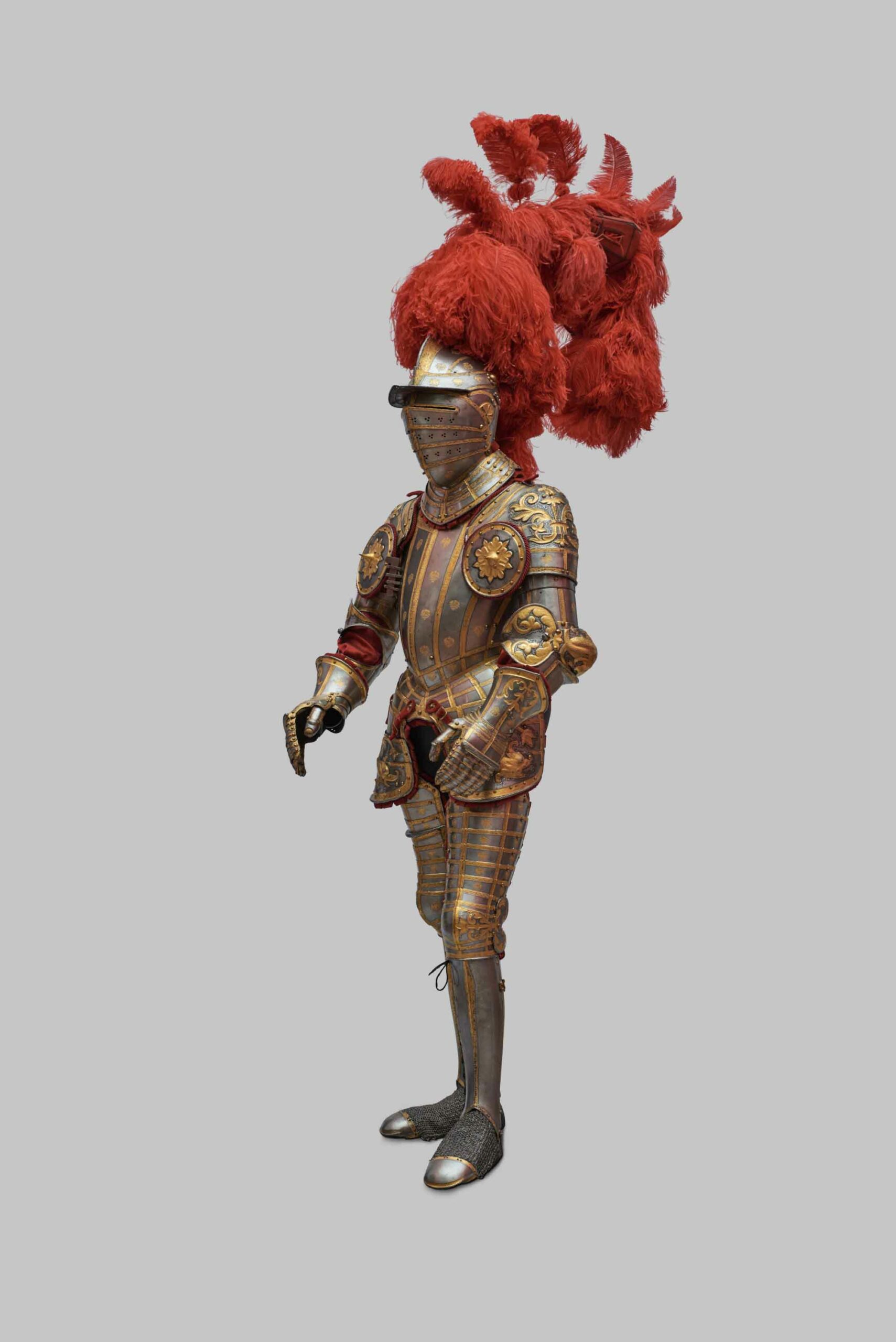
Bizarre, upturned codpieces, with no obvious use on a battlefield and apparently designed to simulate erect male genitalia in a display of virility, also feature in an impressive display that the museum has assembled, with pieces from all over the world, from historical Habsburg suits of armour from Austria’s own collections, as well as pieces flown in from London, New York and further afield.
As a teenager, Ronald S. Lauder, 78, a billionaire American businessman who has loaned items from his personal collection, says that he enjoyed looking at the suits of armour at the Metropolitan Museum in New York due to the “breathtaking craftsmanship” that went into every aspect of creating them.
The exhibition also demonstrates, with video evidence, that the suits of armour are so well crafted that their wearers are able to do somersaults in them.
But there is also a rather uncomfortable-looking piece, a steel corset from the Wallace Collection in London, in the United Kingdom, which was made by Eleonora of Toledo, Duchess of Florence, with two cut-outs for the wearer’s breasts to fit through.


The exhibition, which runs until late June, and which has been described as unique, with some pieces having never left their country’s shores, is geared towards dispelling the contemporary myths and stereotypes seen in Hollywood films and the rest of popular culture of the “mediaeval warrior both brave and manly but also immobile and clumsy, encased in heavy steel armour apparently designed solely for fighting – whether on the battlefield or in tournaments, a sport that seems savage and martial to a modern day spectator”.
Instead, the museum, in a statement obtained by Newsflash, explains that these misconceptions are largely the product of people’s views in the 19th century and of films, from “Ivanhoe to King Arthur, from Monty Python and the Holy Grail to Lord of the Rings and Game of Thrones”.
The museum’s “Iron Men – Fashion in Steel” exhibition is geared towards exploring “the prominent role that armour played in early-modern society, art, and culture” and illustrating “its importance as a political and dynastic symbol, as a diplomatic gift, as a personal and historical souvenir, and, last but not least, as fashionable steel attire and a fantastic, symbolic disguise – across religious, ideological, and gender boundaries”.
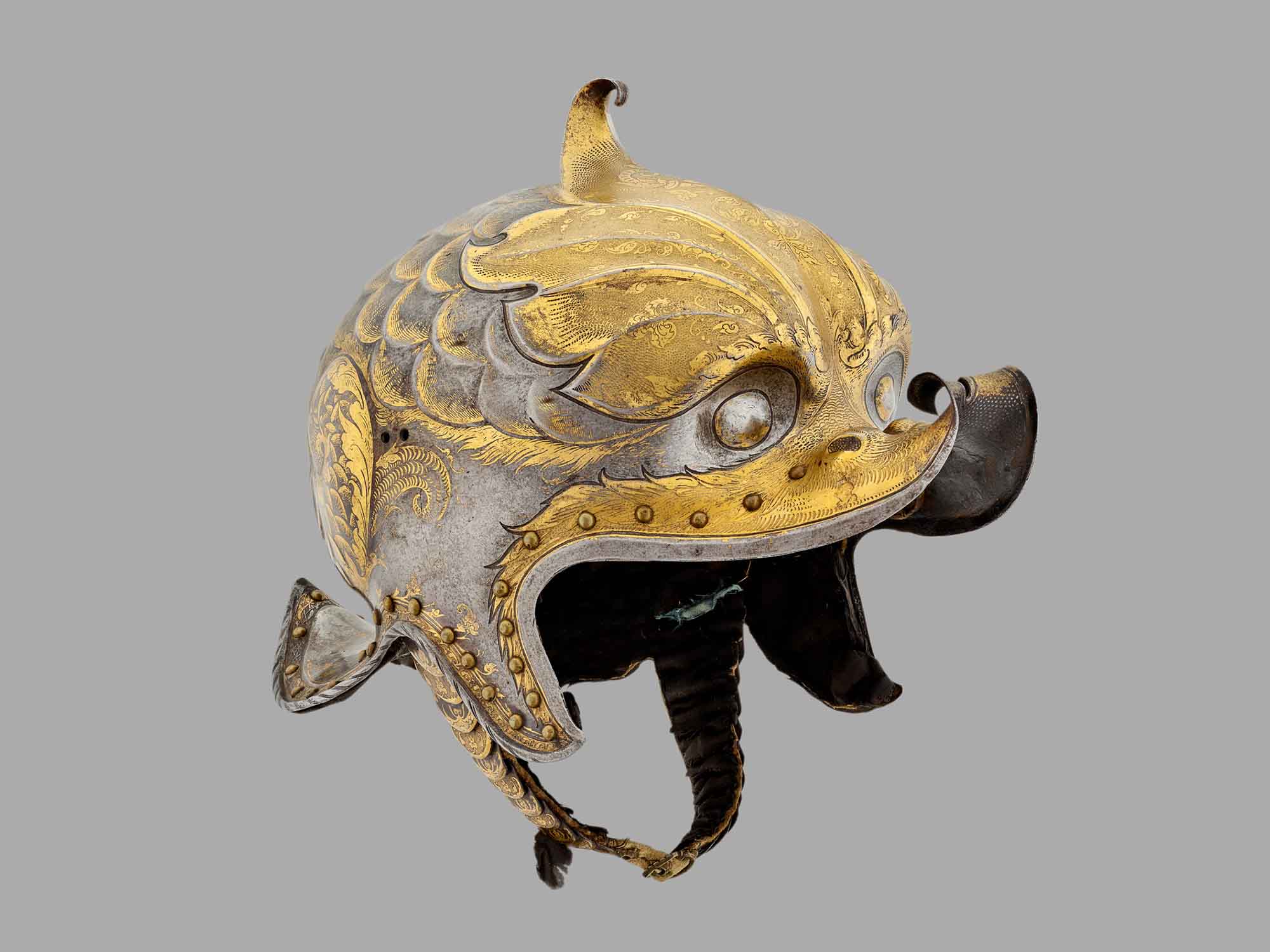

While the museum concedes that “Renaissance armour was primarily a form of protective clothing worn on the battlefield and during a tournament”, it also says that it was about “fashion in steel: an expensive, imposing piece of clothing regarded as both fashionable and elegant that played a central role in the life of a nobleman from cradle to grave”.
The museum also said that celebrated armourers like Lorenz Helmschmid in Augsburg and Filippo Negroli in Milan were “highly-paid specialists who created exceptional and unique artworks”, adding that every piece of armour “reflected the aesthetic preferences of the period in which it was produced”.
They explained that “some armourers played with the fashionable side of armour, creating things like armoured skirts and puffed sleeves that imitate the extravagant attire sported by the landsknechts, mercenary troops from southern Germany”.
Armour was not just about being protected in the heat of battle, “the aesthetics of armour – its steeliness, its carapace-like concept – in turn, influenced textile attire”.


The exhibition is geared towards showing “both the fashionable aspect of armour and their use as disguise”. The museum explains: “tournaments were often held during Carnival and many participants wore fantastic fancy-dress armour – symbolic costumes that allowed their wearers to assume a role while displaying their skills and bravery in front of a large audience.
“For these jousts, armourers produced visors shaped like the head of a man or an animal, or with grotesque mythological faces.”
Or bizarre, upturned codpieces, apparently designed to simulate erect male genitalia in a display of virility. This may appear to be contradictory with the notion that “noblemen also frequently donned various disguises, including dressing in women’s clothes, to attend the costumed dances held in the evenings”.
But the museum explains that “crossdressing was part of the chivalrous culture of the Renaissance. Our knight in shining armour was not only brave and strong, he was also fashionably attired and sometimes even slightly gender-fluid.”


And wearing suits of armour was not just something for men, women also wore them. The museum said: “Very much a male piece of clothing, armour was closely connected with the construction and display of masculinity. Wearing armour was regarded as a male domain and celebrated in early-modern chivalry. But literary and historical documents tell of women wearing armour and participating in battles, which countered contemporary expectations of female gender-specific behaviour.”
The museum also dispels another myth, arguing that “armour, or to be exact, plate armour that completely encases the wearer’s body, is not a mediaeval phenomenon but dates from the early modern era: the first fully functioning sets of armour were produced in northern Italy in the early fifteenth century, and they reached their apex during the following two centuries, the Renaissance.”
Complete suits of armour were devised between the early 15th and the first half of the 17th centuries to successfully fend off lances and swords, and were used as protection against infantry weapons, including pikes, arrows and crossbows.

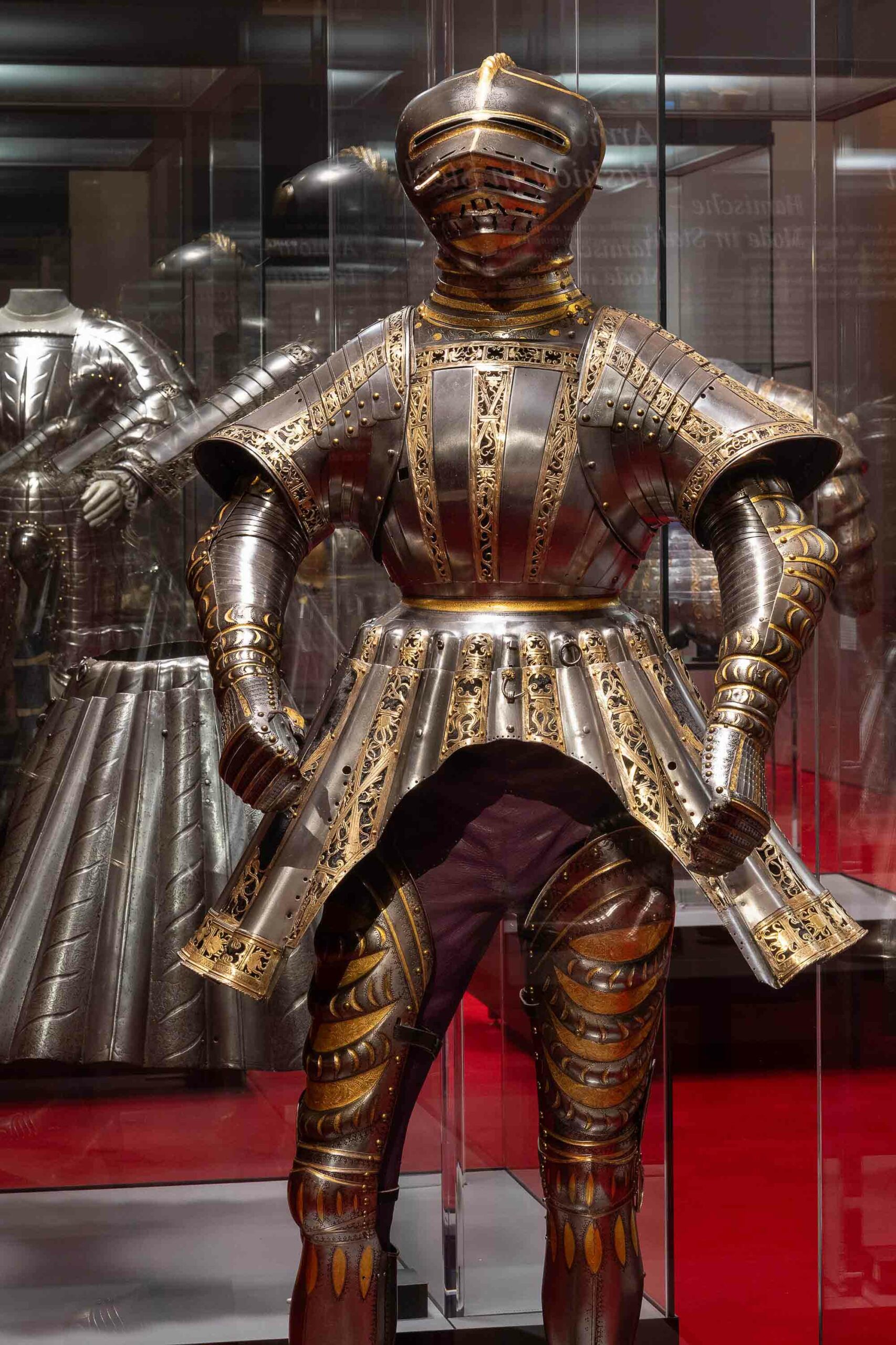
But changes in how warfare was conducted, especially with regard to the development of weapons using gunpowder, such as firearms and cannon, “played a major role” in the demise of the amour “as military protective clothing”.
The museum explained that despite suits of armour weighing around 20 to 30 kilogrammes (44 to 66 lbs), “the weight was distributed over the entire body, unlike, for example, a modern backpack, where the weight is borne by the shoulders alone”.
Furthermore, it “was a form of protective clothing designed to ensure the wearer could move with ease. Otherwise clunky, immobile armoured men would have faced off on Europe’s battlefields during the fifteenth and sixteenth century – and these would have been peaceful times indeed.
“In order to ensure this flexibility, plate armour comprises numerous individual pieces, often as many as 200. This meant that walking, running, and jumping was not a problem. If necessary, an armoured man can even do summersaults.”
The exhibition, with loans from all over the planet, “assembles some of the most spectacular sets of armour from the late fifteenth to the early seventeenth century. Together with selected paintings, textiles, and sculptures, the circa 170 artefacts throw a new light on this complex subject.”
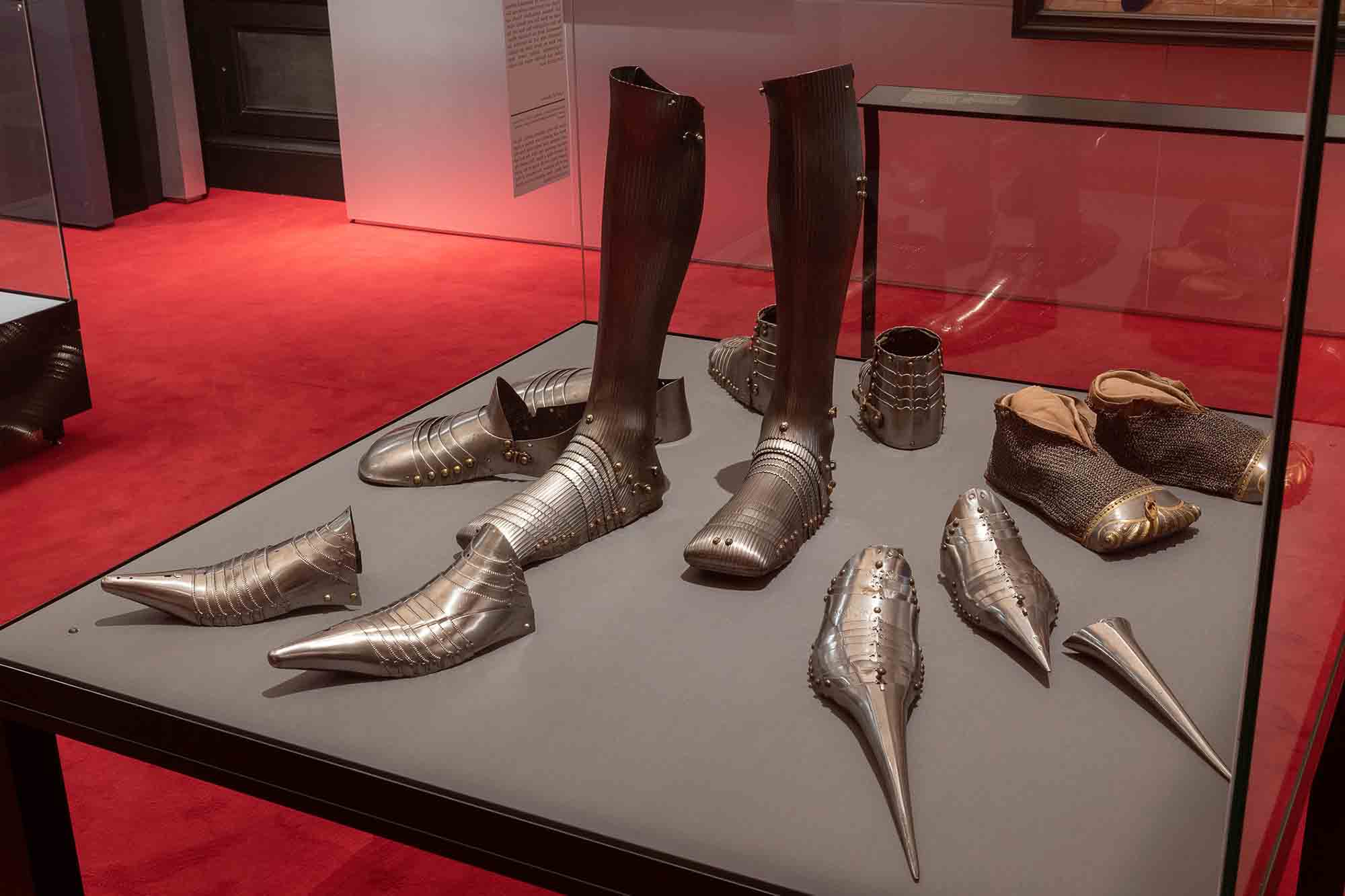
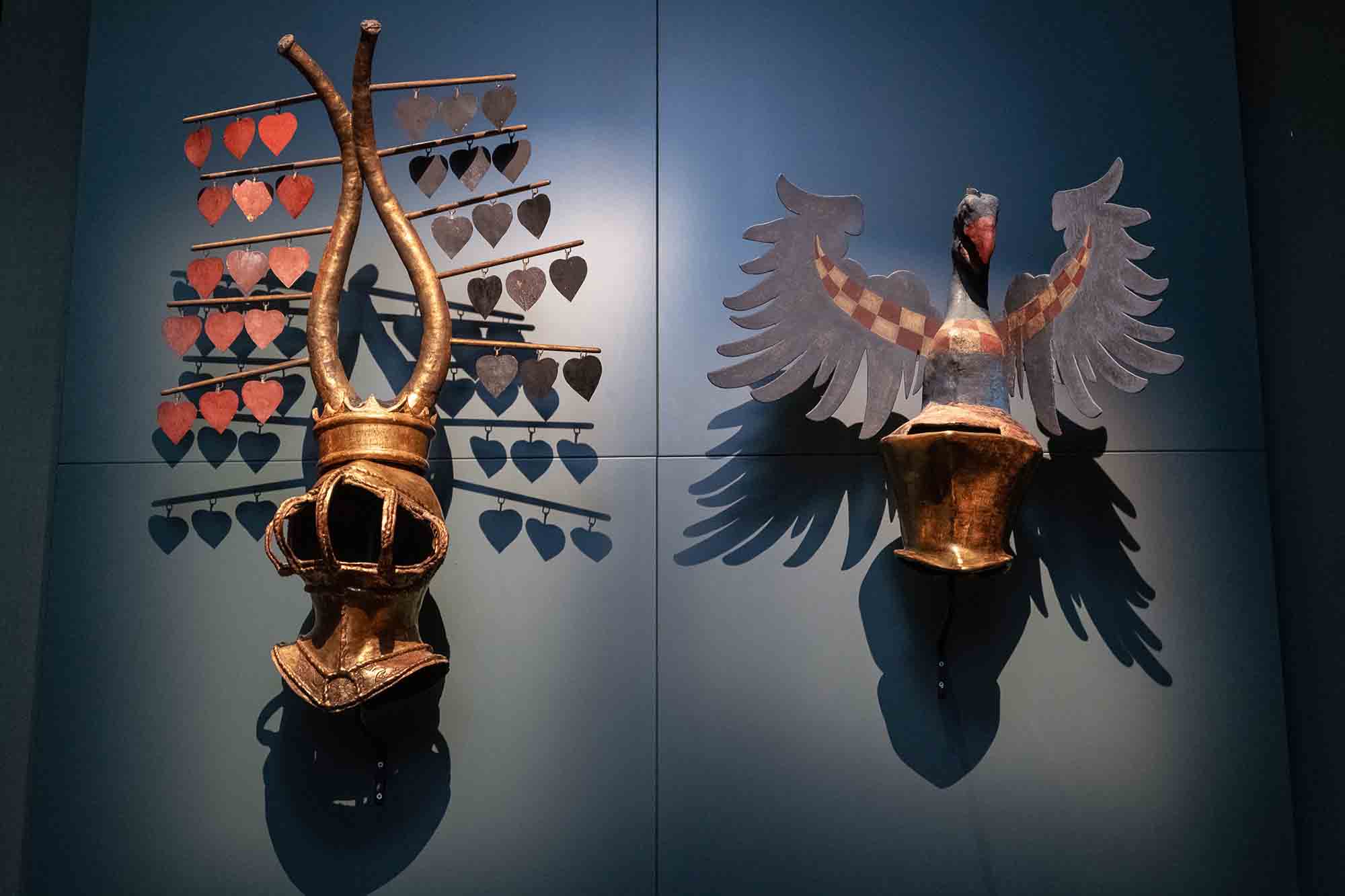
The museum added: “Masterpieces from the Imperial Armoury in Vienna – the world’s most important collection of its kind – form the heart of the exhibition. Also on show are precious loans from the Metropolitan Museum of Art in New York, the Real Armeria in Madrid, the Wallace Collection in London, and the Ronald S. Lauder Collection. Some of these splendid artefacts have never been shown outside their home collection and were extensively restored for the exhibition.
“There are also important loans of paintings from the Metropolitan Museum of Art in New York and the Staatliche Kunstsammlungen Dresden, loans from the Victoria & Albert Museum in London, the Albertina and the Wien Museum in Vienna, and Ambras Castle in Innsbruck, as well as fragile, rarely exhibited and newly-restored artefacts from the holdings of the Imperial Armoury.”
To find out more about the author, editor or agency that supplied this story – please click below.
Story By: Joseph Golder, Sub-Editor: William McGee, Agency: Newsflash
The Ananova page is created by and dedicated to professional, independent freelance journalists. It is a place for us to showcase our work. When our news is sold to our media partners, we will include the link here.

